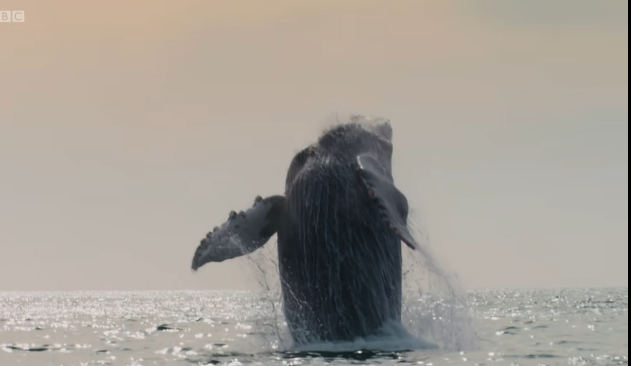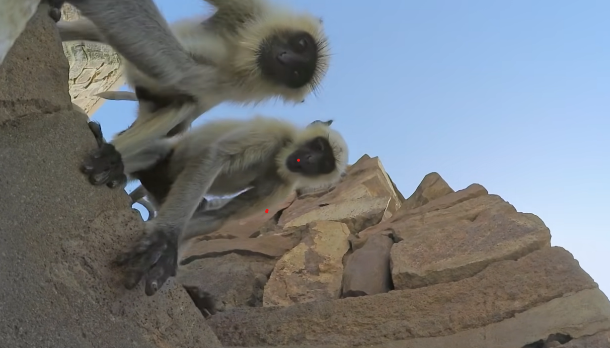If you have never sat down in front of your TV screen, to watch the Kung-fu mantis fight off the jumping spider, then do it. Do it now. I’m serious do it, here is the link. It just seems crazy to me how this baby mantis is better in Kung Fu than 99.9% of the people I know (I know a guy; he is just so good).
Somehow, as crazy as that seems, it is not the part of the video that impresses me the most. In fact, mother nature has such a diversified portfolio of wackadoo wonders to offer to us, so the real wackadoo thing here is how can BBC Earth film such a masterpiece for us. If you watched this short video, you must have noticed that the filming, and the ability to catch every angle, are even better than some of Disney’s latest productions, and it may seem impossible to capture something this tiny, in a forest this big. Not only that, but these channels also manage to capture footage of orcas in the arctic, eagles over the Alps, ants, lions, elephants, sharks… you know the stuff. Naturally, many questions pop in my head every time I watch something like this, with such a high quality. Did they observe the behavior of the animals and then recreate it in a video? Did they film everything? If yes, how much editing did they do? And seriously, how much time do you have to wait before capturing something like this:
Let me NOT give you the benefit of the doubt, pretty much every sequence in these documentaries is filmed by cameras. As much as people may think that some scenes are reconstructed, everything is filmed, the real question is, what different techniques are used to film?
History of wildlife documentaries
Obviously, more than one technique is used to film, depending on many factors like the weather, the environment (sea, mountain, savanna…), is it dangerous or not, and so on. So to understand what technique to use, let us go through the history of wildlife documentaries.
One of the techniques used is time-lapse. For a fact, the first-ever wildlife documentary was called “The Birth of the Flower”, by Emile Cohl. If you haven’t guessed yet, the 1903 documentary was a time-lapse footage of a flower growing. It is pretty much the same as the videos you see on Insta and Facebook, but not exactly. Now as much as you should be staggered by the new footages we get, you should be grateful for « The Birth of the Flower », for it paved the way for modern documentaries like blue planet, or blue planet 2, surely blue planet 3 in the future. But more seriously, the first ever wildlife documentary was indeed a lie, Emile cut out pieces of paper to create the flowers, then photographed each frame as he made slight changes to the position of the flowers. When the frames were played back in sequence, the flowers appeared to grow and bloom. This technique is called “paper cutout animation”, but let us not dive into this boring stuff. Let us rather focus on the cool stuff, like monkeys.
Techniques used for production
Fast forward one century, where we have HD and 4k cameras that get us crystal-clear footage of fairyflies, mosquitoes with a body length about the average width of a human hair, 0.139 mm for the most curious (I was going to add a picture of them, but they are gross so look it up if you’re extra curious). Thanks to these evolved technologies, we can now insert a 4k camera inside a monkey puppet that will be a spy inside a colony of monkeys, to follow their routine and their ways. That is cool, but not for all of us…


Even I couldn’t spot it when it’s among its peers.


In this video, one of the adults accidentally pushed it down a tree, of course the puppet is not alive so it was not moving, so all the colony thought it was a dead baby.




One by one, the monkeys came to check on the baby and a grieving mood has been set as if one of their own just died. Feelings of empathy were seen as well as monkeys consoling each other. It is quite tragic, but the close-ups that the puppet got us are worth to keep in your gallery, you know, to look at them if you ever feel sad.
One similar technique that is used to film this is to attach a camera directly to the animals. For instance, they do it for documentaries that are filmed in the sea, where a camera would be attached to a sea turtle, a seal or a whale, but also for documentaries in the savanna where the camera would be attached to an elephant or to big felines. Cameras can also be attached to birds such as eagles. But it is not as easy as it seems to attach a camera, and even if you manage to, many other factors may mess up the footage. In that case, one solution would be to use the knowledge of an animal’s behavior (sleep schedule, favorite prey, when does it go where) and implement what is called “camera traps”. This technique is used a lot when trying to film insects, for most of the time, they are hidden. This technique is efficient because there is no need to keep on watching the footage until an animal finally shows up. In fact, if you do not want to use it manually, the cameras can be triggered by motion or heat-sensor, just like the motion-controlled cameras, that are programmed to follow a specific path. To sum up, there are many techniques that are used to film a wildlife documentary, such as drones, time-lapse, night vision cameras, etc. But one of my favorites is macrophotography, which is used to capture tiny creatures. It was used in the video of the kung fu mantis. Macrophotography is the photography equivalent of a spy mission. You sneak up on these tiny creatures and capture their secret world in high detail. It’s like being a 007 agent, but instead of taking down bad guys, you’re taking down amazing bug shots, just like this:
Now since the beginning, I have been blabbering about techniques to shoot a wildlife documentary, but notice that we only talked about the filming part. In fact, just like everything in this life, this kind of project requires an incredible amount of teamwork. Teams would volunteer to go spend 4 months in Antarctica or in the Savanna, just to capture the perfect shot, so it is natural to assume they must be really pissed if they see an orca but they don’t get the shot. After that, they bring tons of videos to be edited. But of course, why stop there when you are so close to perfection? After receiving the footage and editing every part, some final cherries are added on top of the cake, such as the fabulous narrator voice of Sir David Attenborough, or sometimes, get crazy and call Hans Zimmer to compose to you the perfect soundtrack for your documentary. Finally, sometimes artificial sounds are added to make it even more realistic, such as the sound of a bird flapping its wings, the chirping of crickets or the roar of a lion.
My pics: favorite wildlife documentaries
Wildlife documentaries are like a box of chocolate, you cannot choose which one is the best. Although, even if I cannot choose which one is the best, I have to give a big shoutout to the dinosaurs’ documentaries, which are not exactly the same as documentaries such as “Grizzly Man”, “Kangaroo Valley” or “Wild Life”, but are still extremely entertaining. So I will use another comparison and say this, wildlife documentaries are like a bag of popcorn, you can’t just have one and be satisfied.
Finally, I will end by saying this, instead of watching Brooklyn 99 for the 10th time, watch the wildlife, maybe you will get to look smart on a play night or a zob & skip Bryan night. Who knows, maybe you get very interested and become involved in conservation efforts, or in the filming of planet blue 3.


Cliquez sur la photo pour plus d’articles !
Dans la même thématique, la rédaction vous propose les articles suivants :











